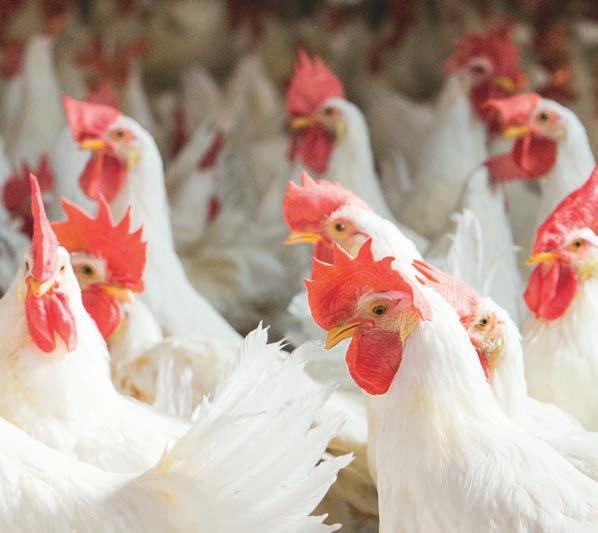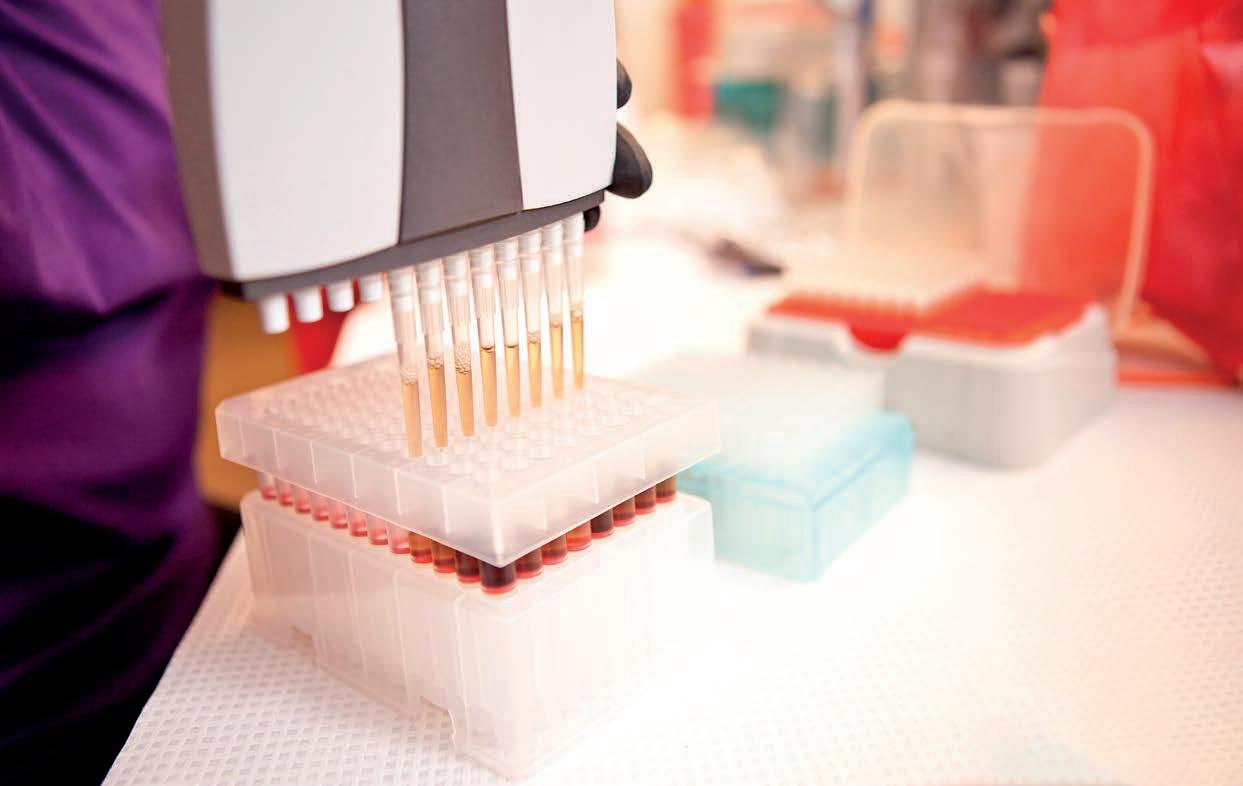
5 minute read
Problem solving: drinking water challenges
The single most important nutrient provided to birds is water. Optimizing quantity and quality is essential for achieving desired performance from food animals whether they are raised organic, antibiotic free or under traditional production practices. Identifying weak points in either quality or quantity is the starting point for a good water program and solving production challenges.
What is the water supply?
Advertisement
Identify and inspect the source. Has there been any changes to the source such as maintenance on a well pump, flooding near a well-head or loss of pressure that could cause back siphoning which can pull pathogens into the water supply. Giving the water source a critical evaluation can be the crucial starting point to finding an issue.
Test the water
Minerals
Test the water at the source for pH, iron, manganese, calcium, magnesium, nitrates, sulfates, sodium and chloride. When possible include heavy metals such as arsenic, copper, cadmium and lead. While getting total dissolved solids or hardness is a starting point, it doesn’t give adequate information so that an action plan can be developed if necessary. To fix high levels of sodium will require a different solution than eliminating iron or calcium from a supply and knowing specific amounts of each problems are more easily identified. The only time it is necessary to check mineral content beyond the source is if there is a concern that water treatment is not working properly. Rarely does the quality change dramatically without some type of treatment failure such as acid injectors or water softeners.
Bacteria
Test the source and water in the production barn for total bacteria as well as E. coli and coliform. If antibiotics or organic acids have been used in the water system, then include a yeast and mold analysis. Microbial levels can change dramatically from source to the actual drinkers so testing the water throughout the process helps identify where loss of quality is occurring. This is beneficial for focusing a cleaning and sanitation program where it is needed most. When working with operations plagued by health challenges, consider opening a water regulator and swabbing the diaphragm or a the filter in a filter housing. If the water system is a source of disease challenges, these are the most likely places to find the issue.
Inspect the water system on the farm
Drinkers and regulators-how old is the equipment?
Has the drinker system been subjected to treatments such as acids and chlorine that might impair their function overtime? Measure milliliters per minute flow from the drinkers to assure they are putting out the quantity recommended by the manufacturer for each specific bird age.
Supply plumbing
Determine gallons per minute flow rate at each barn to assure birds have adequate quantity of water coming into the barn. How old is the plumbing and could there be mineral and biofilm buildup? Are there dead end pipes that could be a factor? What is the age and material of the distribution system?
Sanitation between flocks
Has the system been cleaned between flocks? How? With what products? Was the entire system, barn lines as well as underground distribution lines, cleaned? Proper cleaning procedures are critical for success with eliminating disease challenges in the water. Sometimes what we think is occurring may not be reality.
Ask questions and make sure products designed for water system cleaning are being used at the correct concentration and left adequate time to complete the job. Utilize swabs to inspect that the cleaning procedure is working. Again, opening a regulator and swabbing it for microbial growth post line cleaning will provide all the evidence needed.
Product use during locks
Sanitizers Is there a routine use of water sanitizers? It may be necessary to pull a sample from the drinker and test for bacteria and use this to correlate to an adequate dosage of chlorine or hydrogen peroxide because the water on farms will respond differently to each sanitizer. What works beautifully on one operation may be too much or too little for another.
Field experience A company that was struggling with E. coli challenges in young poults found their water storage setup was resulting in a loss of chlorine residual by the time the slow moving water reached the poults. A switch to a stabilized hydrogen peroxide during the brooding period made a difference in bird health. Stabilized products tend to hold their sanitizing residual for much longer than chlorine or even chlorine dioxide so can be a useful tool during vulnerable points like early brooding, onset of lay for or at move for turkeys. A broiler complex was struggling with high 7 day mortality with chicks often showing signs of E. coli infections. The complex moved to stabilized hydrogen peroxide during the first week of production and the problem was significantly reduced.
Additional products How often are products such as vaccines, vaccine stabilizers, vitamins, organic acids, probiotics used in the system? While these may have benefits for the birds, they can be food sources for biofilm in water systems. The more operations steer away from good, clean, sanitized water, the greater the risks.
Field experience We got a frantic SOS call from a producer with weekold chicks and water systems clogged with a thick slimey goo. Turns out he had used an organic acid at the end of the last flock, did not clean water lines and then started the new flock on a probiotic. It turned into the perfect recipe for a water system disaster that even raising the lines at night and filling with concentrated cleaner did not fix. He finally had to buy extra nipples and slowly replace and clean all the nipples in his 6 barns.
Sanitizer monitoring and verification
Is any monitoring being done to assure the sanitizer residual is effective? The sanitizer level needed when birds are young may be different from what is needed as they age. By establishing a continuous monitoring program, it is much easier to have an idea of what needs to be done throughout the flock to assure the water is clean and sanitized at a level that is the most beneficial for the birds.
Is there consistent documentation of sanitizer residual? It is hard to convince me that water sanitation is a major part of an operation if there is no proof of testing.
Conclusion
In conclusion, water is a crucial nutrient input for meat and egg production. Water supplies and systems can be plagued with a multitude of issues affecting everything from quality to quantity. Water supplies are dynamic and the nature of production barns and products used can create challenges. Utilize this guide to trouble shoot the water system in your operation.
From the Midwest Poultry Federation Convention










